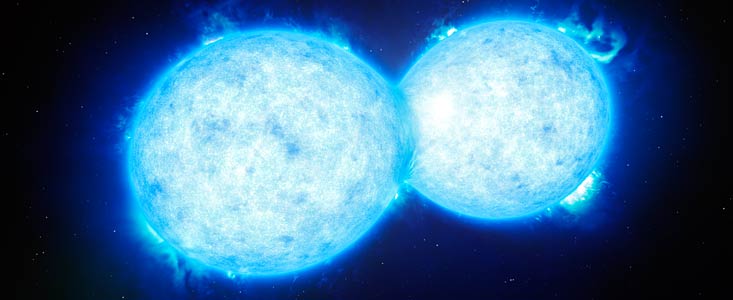
Using ESO’s Very Large Telescope, an international team of astronomers have found the hottest and most massive double star with components so close that they touch each other. The two stars in the extreme system VFTS 352 could be heading for a dramatic end, during which the two stars either coalesce to create a single giant star, or form a binary black hole.
Credit:ESO/L. Calçada
The double star system VFTS 352 is located about 160 000 light-years away in the Tarantula Nebula [1]. This remarkable region is the most active nursery of new stars in the nearby Universe and new observations from ESO’s VLT [2] have revealed that this pair of young stars is among the most extreme and strangest yet found. VFTS 352 is composed of two very hot, bright and massive stars that orbit each other in little more than a day. The centres of the stars are separated by just 12 million kilometres [3]. In fact, the stars are so close that their surfaces overlap and a bridge has formed between them. VFTS 352 is not only the most massive known in this tiny class of “overcontact binaries” — it has a combined mass of about 57 times that of the Sun — but it also contains the hottest components — with surface temperatures above 40 000 degrees Celsius. Extreme stars like the two components of VFTS 352, play a key role in the evolution of galaxies and are thought to be the main producers of elements such as oxygen. Such double stars are also linked to exotic behaviour such as that shown by “vampire stars”, where a smaller companion star sucks matter from the surface of its larger neighbour (eso1230).

